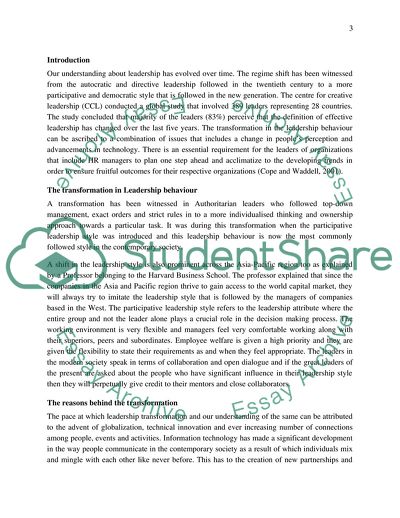Cite this document
(How Has Our Understanding of Leadership Changed across Time Coursework Example | Topics and Well Written Essays - 1500 words, n.d.)
How Has Our Understanding of Leadership Changed across Time Coursework Example | Topics and Well Written Essays - 1500 words. https://studentshare.org/human-resources/1807231-how-has-our-understanding-of-leadership-changed-across-time-your-answer-should-also-highlight-whether-there-is-a-best-way-to-lead-and-explain-why
How Has Our Understanding of Leadership Changed across Time Coursework Example | Topics and Well Written Essays - 1500 words. https://studentshare.org/human-resources/1807231-how-has-our-understanding-of-leadership-changed-across-time-your-answer-should-also-highlight-whether-there-is-a-best-way-to-lead-and-explain-why
(How Has Our Understanding of Leadership Changed across Time Coursework Example | Topics and Well Written Essays - 1500 Words)
How Has Our Understanding of Leadership Changed across Time Coursework Example | Topics and Well Written Essays - 1500 Words. https://studentshare.org/human-resources/1807231-how-has-our-understanding-of-leadership-changed-across-time-your-answer-should-also-highlight-whether-there-is-a-best-way-to-lead-and-explain-why.
How Has Our Understanding of Leadership Changed across Time Coursework Example | Topics and Well Written Essays - 1500 Words. https://studentshare.org/human-resources/1807231-how-has-our-understanding-of-leadership-changed-across-time-your-answer-should-also-highlight-whether-there-is-a-best-way-to-lead-and-explain-why.
“How Has Our Understanding of Leadership Changed across Time Coursework Example | Topics and Well Written Essays - 1500 Words”. https://studentshare.org/human-resources/1807231-how-has-our-understanding-of-leadership-changed-across-time-your-answer-should-also-highlight-whether-there-is-a-best-way-to-lead-and-explain-why.


